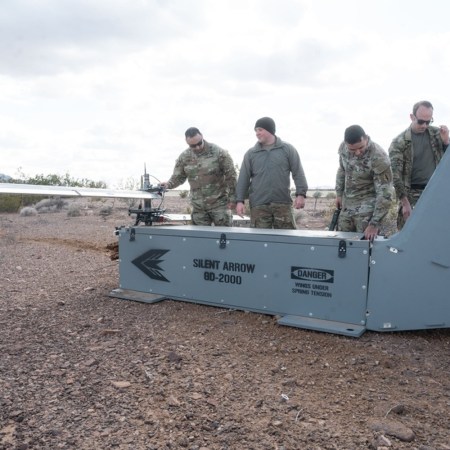The elite flying unit operates in five countries, boasts more than 200 aircraft and a budget nearing half a billion dollars annually — yet few Americans have heard of the State Department’s Air Wing fleet.
The Air Wing, formerly the Bureau of International Narcotics and Law Enforcement Affairs Office of Aviation, was launched in the 1980s to support counter-drug operations – specifically by crop-dusting drug-producing fields. (In a brief write-up in a State Department magazine, a member of the Air Wing boasted in 2011 that it had sprayed 1.5 million hectares of coca in Colombia alone, around 5,800 square miles or about half the size of Maryland, since 1984.)
Air Wing still runs counter-narcotics flights, but a new government report shows that in the 30 years since its inception, it has slowly expanded, adding a number of other missions to its portfolio as it spread to new locations around the globe.
“Department’s aircraft can be used for many types of missions, which vary by location, and may include support for manual drug eradication, interdiction, reconnaissance, surveillance, command and control, medical evacuation, transportation of personnel or cargo, or other functions,” according to the report from the State Department’s Office of Inspector General.
The report states that Air Wing currently operates 206 aircraft, from drones to small planes and helicopters, in five countries — Iraq, Afghanistan, Colombia, Peru and Panama. The unit is about to add Guatemala, where it previously operated counter-narcotics missions. The report also reveals that Air Wing also previously operated in Cyprus and Pakistan as well, but those missions were discontinued in 2017.

In Iraq, Air Wing “provides safe and secure travel for chief of mission (COM) and non-COM personnel or cargo for diplomatic, development, law enforcement, and field support for U.S. embassy operations” with a cost of $180 million in FY 2017. In Panama, it “provides aviation support to the Government of Panama to conduct aviation-supported law enforcement operations against drug trafficking and criminal activities,” a task that comes in at a significantly cheaper $12.5 million.
“The scope of operation varies at each location – from oversight, quality control, and training in some countries, but as much as full contractor operations and maintenance in others,” a 2010 State Department factsheet explains. “The Air Wing has robust logistics and maintenance facilities to provide core level services to the overseas operating locations to ensure high aircraft availability rates.”
In addition to its usual missions, the Air Wing has “occasionally supported humanitarian efforts, such as when INL [Air Wing] helicopters flew reconnaissance and search-and-rescue missions after flooding hit Bolivia,” according to the State Magazine report. “Responding to Pakistan floods in 2010, INL helicopters conducted search-and-rescue and relief operations, delivering supplies to victims just one day after flooding began.”
“Being part of the Air Wing means being part of an evolving mission where nothing stays the same, especially here,” Robert Drury, aviation advisor for the Embassy Air Wing in Kirkuk, Iraq, told the magazine.
To carry out the diverse missions in different areas of the world, the State Department relies mostly on U.S. government contractors – more than 1,500 of them – to fly and fix the aircraft. DynCorp, the primary contractor for the mission, last year began its fifth extension of a $4.9 billion contract.
Back in 2012, the public got a rare glimpse of the Air Wing in action in Pakistan, when a State Department pilot was spotted assisting in the transport of a local girl embroiled in a controversial blasphemy case in Islamabad.

At the time the U.S. government was for the most part keeping its distance from the ordeal, but a photographer captured an image that clearly showed a helicopter pilot sporting a military-style patch that identified him as part of the State Department’s Air Wing, as ABC News reported at the time.
“The Department of State Air Wing operates a large number of helicopters and airplanes relatively unnoticed all over the world,” a source familiar with Air Wing operations told ABC News at the time.
“Most Americans have no idea that the program exists at all.”
This article was featured in the InsideHook newsletter. Sign up now.






















